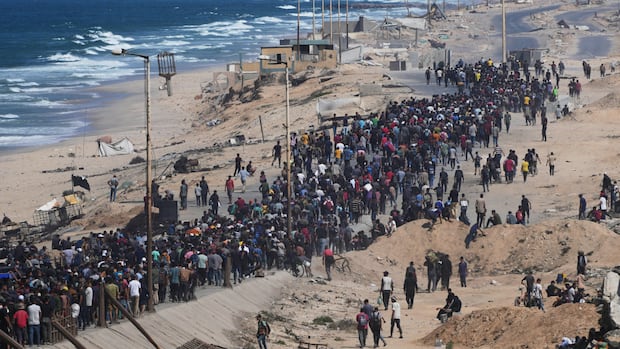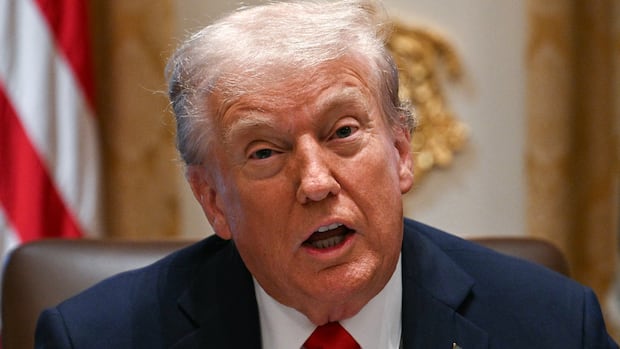Thousands of displaced Palestinians trekked over the wastelands of Gaza to return to the ruins of their abandoned homes on Friday, after a ceasefire took effect and Israeli troops began pulling back under the agreement to end the war.
A huge column of people filed north on foot along the coastal road overlooking sandy beaches toward Gaza City, the enclave’s biggest urban area, which had been under attack just days ago in one of Israel’s biggest offensives of the war.
“Thank God my house is still standing,” said Ismail Zayda, 40, in the Sheikh Radwan area of Gaza City. “But the place is destroyed, my neighbours’ houses are destroyed, entire districts have gone.”
In the south, people picked their way through a dusty moonscape that was once Gaza’s second-largest city, Khan Younis, which Israeli forces razed earlier this year. Most walked in silence. A boy teetered under a foam mattress.
A middle-aged man, Ahmed al-Brim, was pushing a bicycle with bundles of scrap timber tied to the front and back: his family would need the firewood to cook. It was all they had been able to recover from the ruins of their home.
“We went to our area. It was exterminated. We don’t know where we will go after that,” he said. “We couldn’t get the furniture, or clothes, or anything — not even winter clothes. Nothing is left.”
WATCH | Qatar strikes seen as a seminal moment for ceasefire:
Israel and Hamas have finally agreed on a multi-phase plan to end the war in Gaza and bring about the release of dozens of Israeli hostages and potentially thousands of Palestinian prisoners. Andrew Chang breaks down key moments that turned the tide, and why it’s only now that both sides have accepted a deal.
Images provided by Getty Images, The Canadian Press and Reuters.
The Israeli military said the ceasefire agreement had been activated at noon local time.
The first phase of U.S. President Donald Trump’s plan to end the war between Israel and the Hamas militant group gives Israeli troops 24 hours to pull from positions in urban areas, although they will still hold more than half of Gaza.
Israeli police said they were preparing for Trump’s visit on Monday that officials said would include a speech to the Knesset, Israel’s parliament, the first by a U.S. president since George W. Bush in 2008.
Trump said he would head to the region on Sunday, perhaps to attend a signing ceremony in Egypt. Axios, citing four sources with knowledge of the matter, reported on Friday he plans to convene world leaders for a summit on Gaza while in Egypt.
The next phase of Trump’s plan calls for an international body — the “board of peace” — to play a role in Gaza’s post-war administration. The plan calls for Trump to lead it and includes former U.K. prime minister Tony Blair.
- This Sunday, Cross Country Checkup is asking: What’s at stake for you in the Israel-Hamas ceasefire? What questions do you have about the deal? Fill out this form and you could appear on the show or have your comment read on air.
In a televised address, Prime Minister Benjamin Netanyahu said Israeli forces were staying in Gaza to ensure Hamas was disarmed: “If this is achieved the easy way, then that will be good, and if not, then it will be achieved the hard way.”
As the day wore on and it became clear troops were no longer blocking the roads into cities, an initial trickle turned into a flood of Palestinians returning from makeshift tented camps to the homes they had left behind.
Hamas spokesperson Hazem Qassem wouldn’t say if the militant group has agreed to disarm, as per Israel’s demand, in an interview Friday.
“There is a larger discussion regarding the matter [of weapons]. Our stance is that these weapons are a legitimate means to defend our Palestinian people,” Qassem told CBC News freelance videographer Mohamed El Saife in Deir Al-Balah, central Gaza.
“We don’t trust the [Israeli] occupation, but we do trust the negotiators who worked hard to get these assurances: Egypt, Qatar and Turkey, and U.S. President Donald Trump.”
Qassem confirmed that Hamas will not be involved in the internal administration of Gaza under the peace plan.
“Hamas will always remain a part of the people as other Palestinian factions [and as] part of the Palestinian freedom movement,” he said.
Rescue workers reach new areas
Once the agreement is operating, trucks carrying food and medical aid will surge into Gaza to help civilians.
The UN children’s charity UNICEF said children in the territory were especially vulnerable because they have gone without proper food for long periods.
“The situation is critical. We risk seeing a massive spike in child death, not only neonatal, but also infants, given their immune systems are more compromised than ever before,” said UNICEF spokesperson Ricardo Pires.
In Khan Younis, some Israeli troops pulled back from the eastern area near the border, but tank shelling was heard, according to residents in contact with Reuters.
WATCH | Scale of devastation ‘extraordinary,’ aid worker says:
According to U.S. President Donald Trump’s 20-point Gaza peace plan, the flow of aid into the territory should resume as soon as the deal is signed — but will it happen and will it be enough? For The National, CBC’s Eli Glasner looks at where things stand now with the humanitarian groups on the ground.
In Nuseirat camp, in the centre of the enclave, some Israeli soldiers dismantled their position and headed east toward the Israeli border, but other troops remained in the area after gunfire was heard in the early hours of Friday.
Israeli forces pulled out from the road along the Mediterranean coast into Gaza City, where hundreds of people had gathered, hoping to return to the enclave’s main urban centre, which has been under Israeli assault for the past month.
Wael Al-Najjar, 55, waited in that area for the route to open to allow him and his family to head to Gaza City to see what’s left of their home.
“Even if it’s rubble … we will pitch a tent and we’ll live. It’s better than being displaced,” Al-Najjar told CBC News on Friday.
Gunfire nearby made many reluctant to move, and only a few were attempting to cross on foot, residents said.
Rescue workers in Gaza City began missions in areas they had been unable to reach before. Medics said at least 10 bodies were recovered from previous strikes.
“As soon as we heard the news of the truce and ceasefire, we were very happy and got ready to go back to Gaza City, to our homes. Of course there are no homes — they’ve been destroyed,” said Mahdi Saqla, 40.
“For two years we’ve been suffering, displaced from place to place,” Saqla added.
Israel’s government ratified the ceasefire with Hamas in the early hours of Friday. Once Israeli troops have pulled back, Hamas has 72 hours to release the 20 living Israeli hostages it is still holding. Israel will free 250 Palestinians serving long terms in its prisons and 1,700 detainees captured during the war.
Israeli military spokesperson Brig.-Gen. Effie Defrin urged residents of Gaza to avoid entering areas under Israeli military control: “Keep to the agreement and ensure your safety,” he said on Friday.
List of Palestinian prisoners not confirmed
The war has deepened Israel’s international isolation and upended the Middle East, spreading into a regional conflict that drew in Iran, Yemen and Lebanon.
The exiled Gaza chief of Hamas, Khalil Al-Hayya, said he had received guarantees from the United States and other mediators that the war was over.
WATCH | Trump praised after unconventional diplomatic efforts:
U.S. President Donald Trump is touting the peace deal between Israel and Hamas he helped broker as a major diplomatic achievement. While some question the stability of the peace, for now, even some Democrats and critics are acknowledging the accomplishment.
During the Hamas-led attack on Israeli communities and a music festival on Oct. 7, 2023, fighters killed 1,200 people and captured 251 hostages.
Twenty hostages are still believed to be alive in Gaza, while 26 are presumed dead and the fate of two is unknown. Hamas has indicated that recovering the bodies of the dead may take longer than releasing those who are alive.
WATCH | Who is Marwan Barghouti?:
Despite more than two decades in an Israeli jail, Marwan Barghouti remains the most popular Palestinian leader. For The National, CBC’s Margaret Evans explains why some say his release is key to peace in the region — and why that would be a hard ask for Israel.
The Hamas-run Interior Ministry said Friday it would deploy security forces in areas where the Israeli army withdrew.
Trump said he would head to the region on Sunday, possibly to attend a signing ceremony in Egypt. Knesset Speaker Amir Ohana invited him to address the Israeli parliament.
The deal received support from Arab and Western countries and was widely portrayed as a major diplomatic achievement for Trump.
The U.S. will deploy 200 troops as part of a joint task force for Gaza stability, with no Americans on the ground in the Palestinian enclave, two senior U.S. officials said on Thursday.
The officials, speaking to reporters on condition of anonymity, said the 200 would be a core part of a task force that would include Egyptians, Qataris, Turks and probably Emiratis.
More than 67,000 Palestinians have been killed in Israel’s assault on Gaza.









